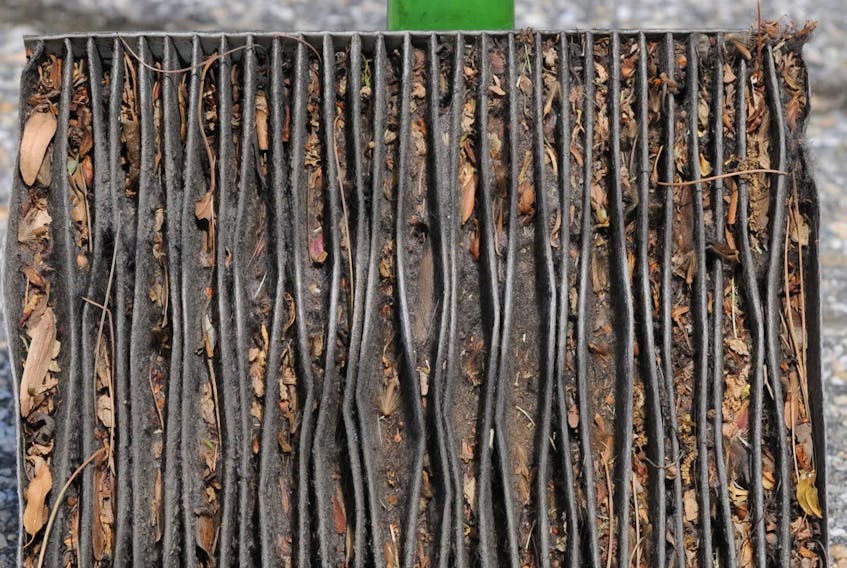In conducting research for my weekly used-car advice guides, I’ve been come across a recurring (and smelly) issue that’s reported somewhat often across a range of makes, models, and model years.
The problem, in simple terms, is a nasty smell being pumped into the vehicle cabin via the climate control vents when the blower fan, and especially, the air conditioner, is activated.
The smell can take various forms, though most suffering from this issue say it resembles a dirty gym bag, dirty laundry, nasty socks, or wet carpeting.
Vulnerable individuals with respiratory concerns may even report adverse effects, difficulty breathing, and more.
The cause of the smell? Mould. Dirty, filthy, disgusting mould.
And, not to freak anyone out, but it turns out that your vehicle’s air conditioner is a great place for mould to live.
First, it’s often damp and moist.
Various components in your AC system are responsible for sucking moisture (humidity) out of the air in your cabin, which helps to cool and ‘condition’ it. But the moisture in the air doesn’t just disappear: when you activate your AC, the air passes over cold surfaces within, causing the moisture to condense — that is, turn into water droplets. The dry, cool air returns to the cabin, and the condensed moisture is allowed to drip outside of the car. This is why you’ll sometimes see a puddle of water underneath your car, if you’ve been parked for any length of time with the AC turned on.
Second, for the many, many hours each summer day when your vehicle’s AC system is not operational, it’s nice and warm, just like the ambient air outside. Now, you’ve got dampness, and heat. These are two of mould’s three favourite things.
The third thing? Darkness. And the inside of your AC system, where this moisture-collection and drainage takes place, is a place that never sees sunlight. It’s a warm, damp, dark place, which makes it the perfect habitat for mould, and all of the not-so-lovely smells that come with it.
Typically, it’s not easy to remove the mould, either. When it forms, it typically accumulates deep within the guts of the AC system. These parts of the air conditioner are not usually easy to access, and are often buried deep within the dash of your vehicle. This makes cleaning the mould out a complicated and sometimes-ineffective process.
So, what can you do about it?
A great step is to prevent the mould from occurring in the first place. Easiest solution here? Just turn the AC off a few minutes before the end of your drive, but leave the fan running. This will pull air through the system, but without condensing moisture out of it. The air can help speed the evaporation of any previously-collected moisture, leading to an AC system that’s dryer when you park the vehicle. Effectively, this takes away one of mould’s favourite things: moisture.
Here, you’re using the climate control system to dry the air conditioning system out. Many owners and technicians say this a great practice to eliminate mould, or stop its growth, before it takes over and results in a bad smell.
A clogged cabin air filter may also be to blame. Most vehicles use a cabin air filter to pre-clean the air that gets drawn through the climate control system, though most vehicle owners fail to replace this filter often enough (and some never do).
A clogged cabin air filter can encourage the formation of mould in several ways. First, a clogged cabin air filter limits the flow of air through the climate control system. Not only does this make your heater and air conditioner perform poorly, it also reduces the air-flow needed to help control the buildup of moisture within the system.
Second, a clogged cabin air filter may be stuffed full of dirt, bacteria, and other nastiness that can encourage the growth of more mould, more bacteria, and more unpleasant odours.
Translation? Keep that cabin air filter clean, and you help your AC system keep itself free of mould.
If the smell already exists in your vehicle, you’ve still got several options. Many dealers will be familiar with this complaint, as it can affect virtually any make or model of car. In some cases, dealers can perform a cleaning procedure, which involves spraying or pumping a cleaning agent through the system, to kill any mould within. Most owners say that this treatment is effective, though some have had mixed results at best. There are many variables at play.
If your vehicle is still under warranty, many dealerships will cover the cost of this cleaning. Ask your service advisor for details.
Similar mould-fighting products for this application are available at automotive retailers and parts stores as well. Be sure to follow the instructions closely.
Some automotive parts suppliers have even begun incorporating mould-resistant materials into the air conditioning systems they build, which intends to keep mould buildup at bay for the life of the vehicle.
To summarize: fend off the initial buildup of mould by turning your AC system off, but leaving the fan run for a few minutes at the end of each drive where it’s convenient for you to do so. And, change that cabin air filter religiously. Observing these two steps seem to be the best way to stop this problem, before it starts.
RELATED:









